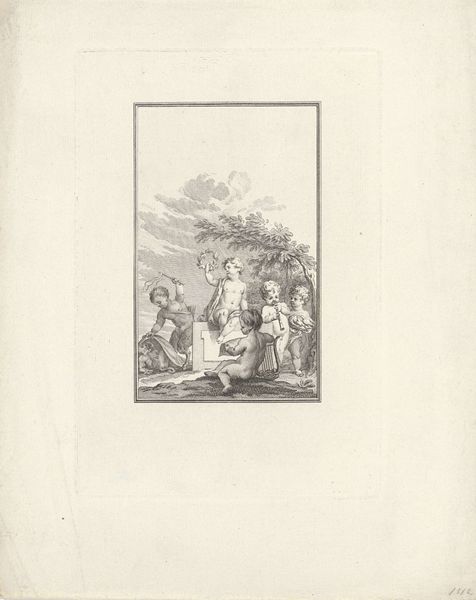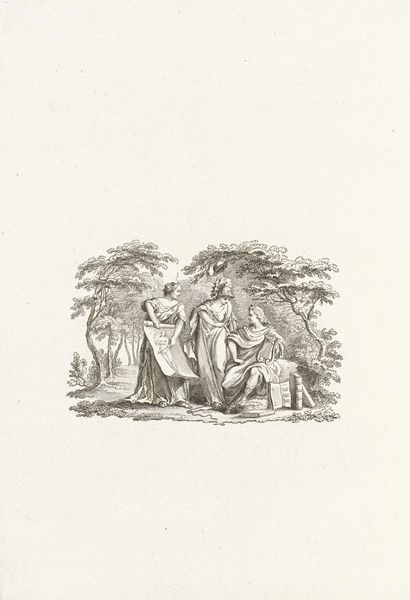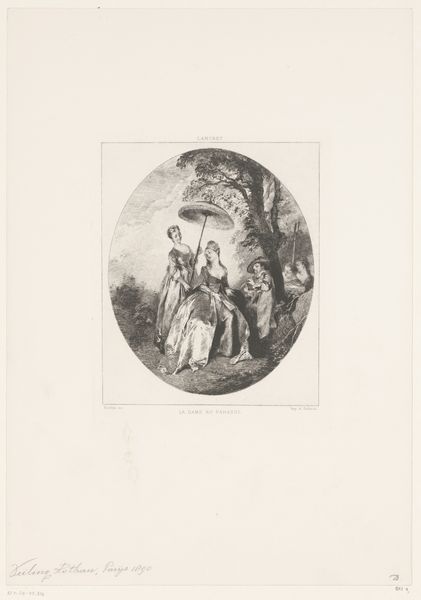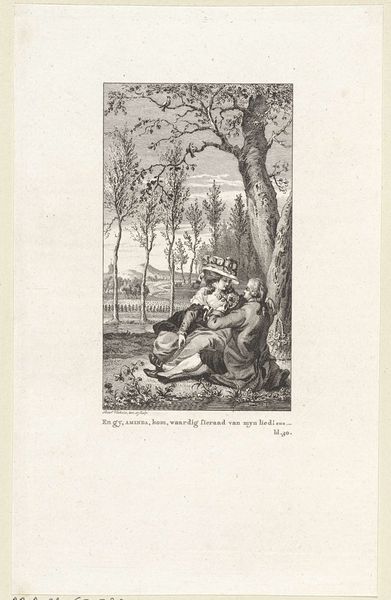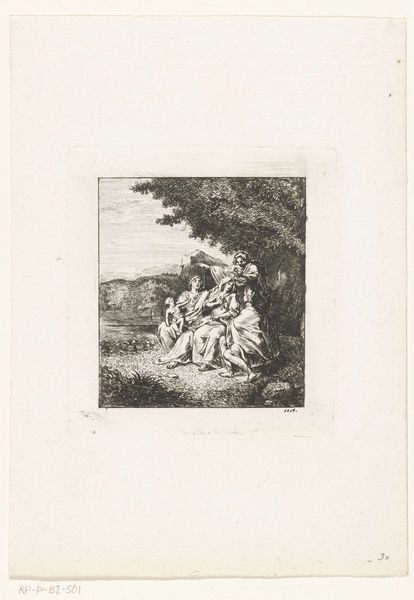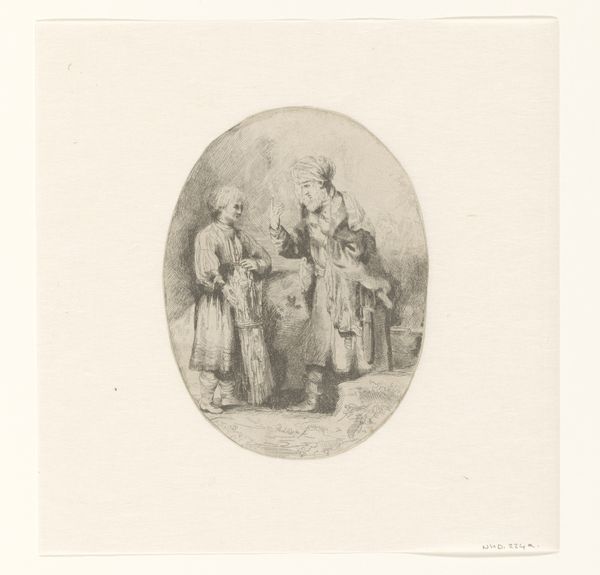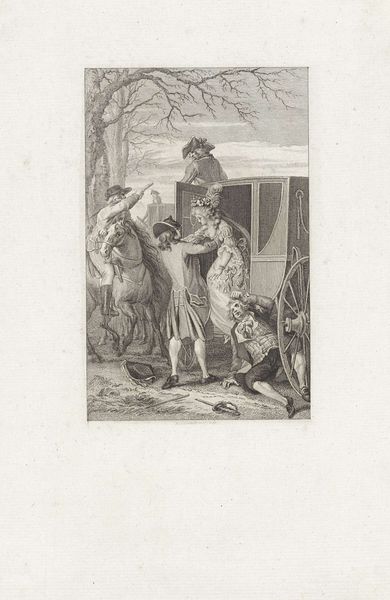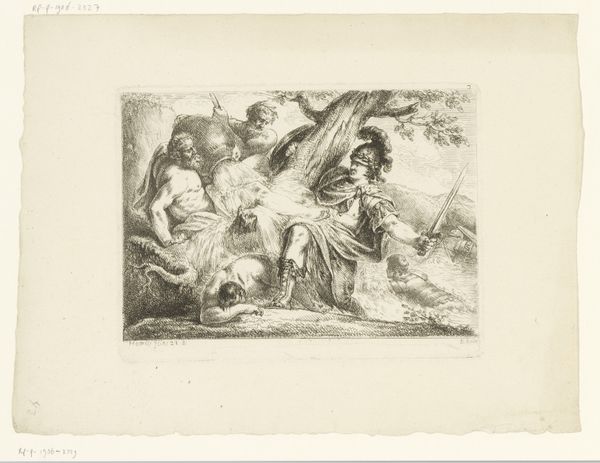
print, engraving
#
allegory
#
baroque
# print
#
old engraving style
#
history-painting
#
engraving
Dimensions: height 338 mm, width 317 mm
Copyright: Rijks Museum: Open Domain
Gaspard Duchange created this print, Melpomene, Erato en Polyhymnia, in the 17th or 18th century. The composition is dominated by three female figures arranged in a landscape. Let’s consider the formal elements at play. The use of line, particularly in the drapery and foliage, creates a sense of movement and dynamism. The contrast between light and shadow, achieved through varied hatching and cross-hatching, models the figures and imbues the scene with depth and volume. The figures are placed as to create a scene of learned leisure. The engraving participates in a broader cultural discourse. The Muses, as symbols of artistic inspiration, serve to elevate the arts. Duchange uses classical motifs to legitimize and ennoble artistic practice. This print reflects the cultural values of its time, where classical ideals were used to frame contemporary artistic and intellectual endeavors. Note how the formal structure of Duchange’s engraving—the interplay of light, line, and classical motifs—not only constructs a visual experience but also engages with enduring questions about art, knowledge, and culture.
Comments
No comments
Be the first to comment and join the conversation on the ultimate creative platform.
